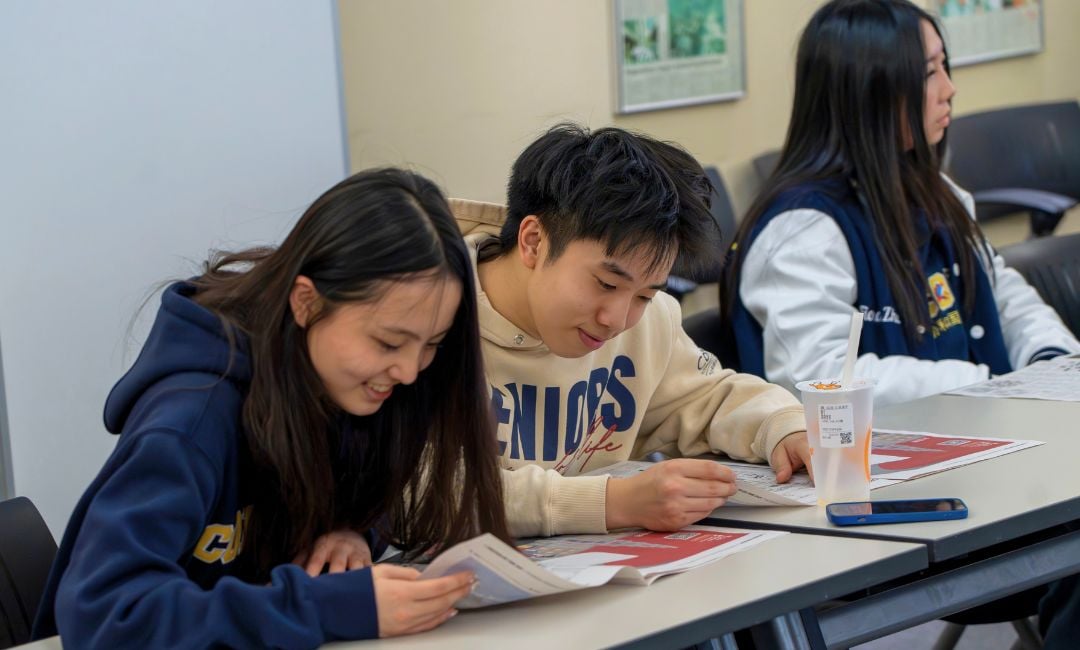
At Concordia Shanghai, our educational philosophy is founded on relationships, because we believe relationships foster positive social interactions and establish a nurturing environment of trust and support in schools. Students who feel connected to their school are more likely to succeed – through positive relationships, mutual respect and good communication, math teachers can gauge their student's current learning levels and provide the best support.
Math teachers approach teaching mathematics with two main objectives: developing conceptual understanding and procedural knowledge in their students.
“When we say conceptual understanding, we really mean we want to make sure that students are able to make connections between concepts, and it can be applied across multiple mathematical ideas, topics and domains. Procedural knowledge is about the ability to execute a sequence of mathematical manipulatives to solve problems,” explains Dr. Tania Blatti, Director of Curriculum and Instruction at Concordia Shanghai.
Concordia Shanghai’s math teachers approach math teaching through physical manipulation during early ages, a learning process that uses pictorial representation and problem-solving using abstract notations. Instead of rote memorization, they focus on facilitating procedural fluency and conceptual understanding of math concepts. This is essential to developing a deep understanding of concepts so students can progress to the next grade level.
“The teacher's objective is to purposefully use questions to guide students' understanding and facilitate their reasoning about these important mathematical ideas and the relationships between the concepts,” says Dr. Blatti.
Our teachers achieve these objectives by using a teaching framework at Concordia Shanghai inspired by Jerome Burner’s Cognitive Learning Theory. This framework encompasses three main learning stages, which make up Concordia’s teachers' framework to approach their math teaching; Enactive, pictures (iconic) and symbolic.
We discuss the details of the learning outcomes of Concordia Shanghai’s math program here.
Three stages of how teachers approach math teaching at Concordia Shanghai
At Concordia Shanghai, we stand out with our approach to teaching math because we focus on critical thinking from a young age, and monitor students’ progress throughout divisions until they are preparing to leave for university.
Dr. Blatti mentions, “Our teachers have knowledge and understanding of learning progressions. They can identify the prerequisites before moving to the next concept and purposefully scaffold students' learning.”
Let's look at how Math teachers at Concordia Shanghai approach math teaching by applying the different stages of the math learning framework to foster our students' growth and better prepare them for the next step in their learning journey.
1. Enactive
At Concordia Shanghai, we refer to enactive as the ‘doing’ stage. In this stage, at an elementary level, teachers use cubes, base tens, fraction bars, and models to connect with students' understanding and further guide them in learning how to manipulate concepts using these objects. Teachers support their students’ learning by connecting these concrete aids to representation and then using modeling exercises along their learning path.
Through practice and the application of modeling, in this case with the concrete aids, students understand and learn the connections between application and modeling, which then guide their thinking.
Dr. Blatti explains, “ We need students to be able to think through complex ideas and articulate their mathematical thinking strategies.”
2. Pictures (Iconic)
In the previous stage, teachers used concrete aids like cubes, base tens, and fraction bars to help children build connections between the aids and concepts while also teaching them how to manipulate these ideas.
The second stage in our math teaching framework is known as the Representational stage or the seeing stage. In this stage, teachers transform the concrete aide and understanding of the concrete aids into drawings, making them semi-concrete.
3. Symbolic
In the Symbolic stage, students will become more familiar with the abstract. Teachers utilize the notation of numbers and symbols and provide students with opportunities to demonstrate and practice their understanding of math concepts while guiding students in achieving mastery of those mathematical concepts. Teachers exercise explicit instruction with the help of manipulatives and demonstrations.
Math teachers at Concordia Shanghai approach math teaching with the intent to guide students in building connections between concepts as they move through the levels of deepening their understanding.
This method enhances the mathematical learning and performance of our students. Unlike rote learning or memorization, our methods enable students to use their knowledge, understanding, and abilities and apply them to different subjects in school and to scenarios in their life as well.
“By using concrete aids, or connecting to students through real life application, it appeals to a whole range of sensory, visual, auditory, tactile, kinesthetic learners, and helps to improve conceptual understanding so that students can relate mathematical operations and tackle more complex problems,” explains Dr. Blatti.
At Concordia Shanghai, we believe that conceptual understanding is critical because it supports retention. By placing emphasis on conceptual understanding our students are able to retain their math learning in their long term memory while rote memorization may only remain in their short term memory.
By helping our students connect and learn new ideas to their existing ideas, they are able to integrate this learning into their long term memory. This is how Concordia is able to provide its students with a strong and robust understanding of mathematical concepts which they can continue to apply to a variety of subjects in school and life.





